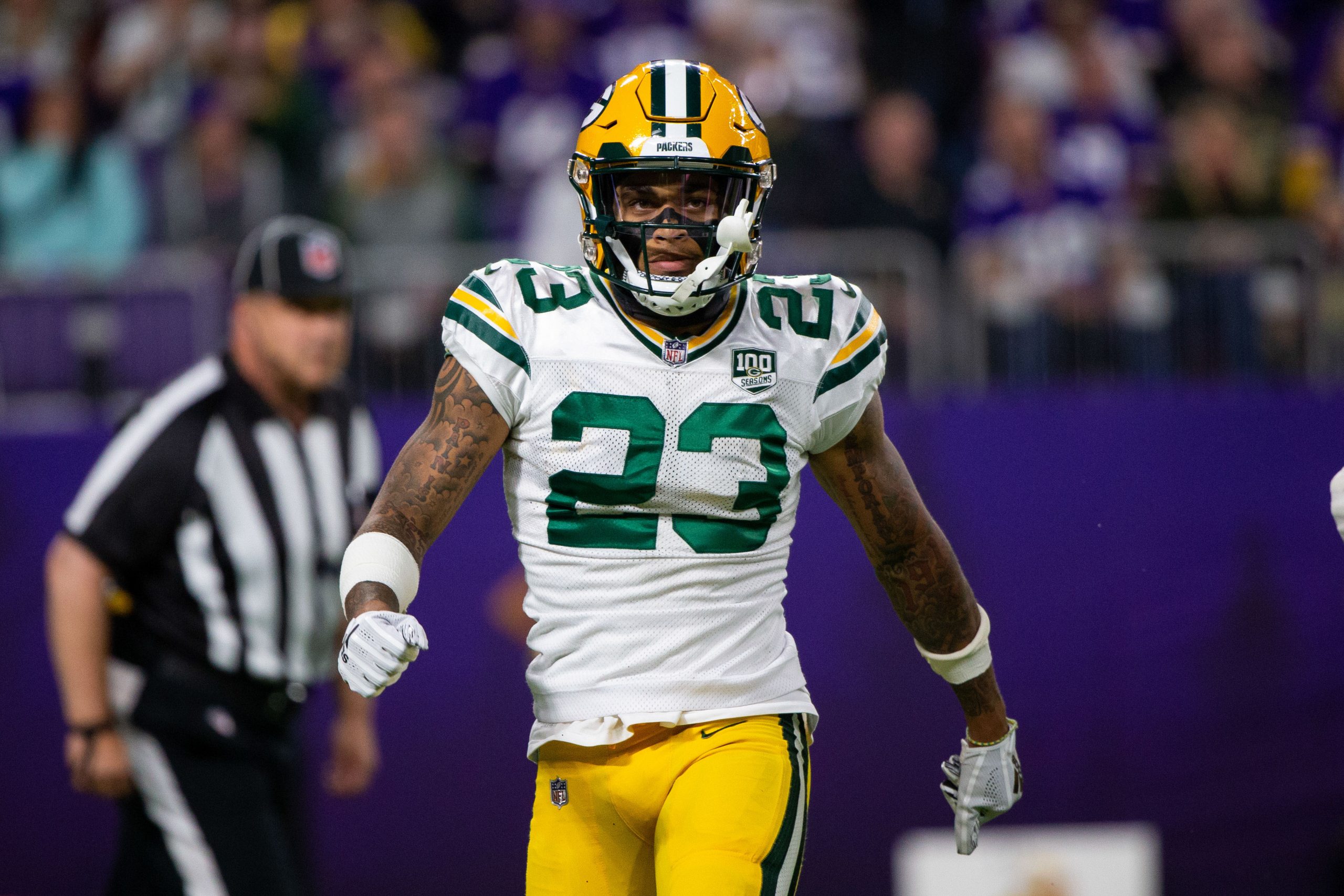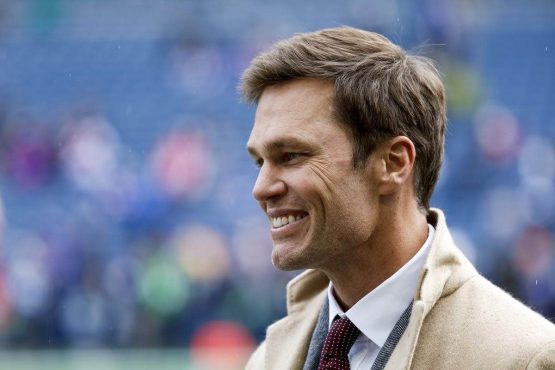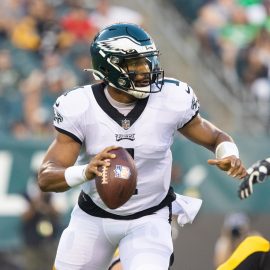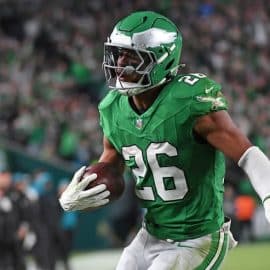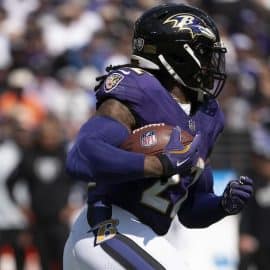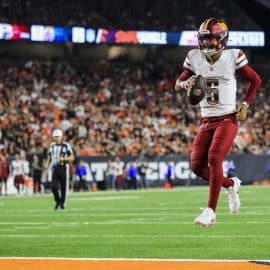Now that the 2018 season is over, it’s time to take stock of the performance of the Packers draft class of 2018. All draft choices from this season remain on the team’s roster as of the end of the season. How did GM Brian Gutekunst’s first draft class do in their inaugural season? Here is an in-depth analysis of their rookie performances and what lies ahead for the Packers class of 2018:
Round 1: CB Jaire Alexander
First-round pick Jaire Alexander was the Packers rookie of the year. Alexander started the season as the slot corner but was the team’s top cover corner by the end of the campaign.
Alexander played in 13 games and finished second on the team in tackles with 64. The Louisville alum was brash, confident and adjusted well to the NFL game. He has a short memory and wants to cover the opposition’s top receiver, two good qualities for a cornerback to possess.
Alexander impressed his teammates. “He’s a fearless guy. The sky’s the limit,” veteran defensive back Tramon Williams said. “As long as he’s healthy and he’s on that field, I think he’ll be special.”
The one disappointment for Alexander was that he only intercepted one pass all season. This is the biggest thing that prevents him from being considered an elite corner. As he gains experience, he should improve in this area.
Alexander was a very strong first-round pick and he has the potential to be a lock down corner in this league for years to come.
Round 2: DB Josh Jackson
Second-round pick Josh Jackson played in all 16 games for the Packers as a rookie. He finished with 45 tackles, 35 of them solo and 10 passes defensed. He did not record any interceptions.
Jackson struggled in man coverage because of his lack of blazing speed. He also tended to hold opposing receivers when he couldn’t keep up with them.
There is no doubt Jackson can improve on his rookie performance once he adjusts more to the NFL game. Some observers have wondered if his lack of speed makes him a better fit at safety over the long term.
Round 3: ILB Oren Burks
Burks was fighting for a starting job in training camp after Jake Ryan was lost for the season, but a shoulder injury suffered before the preseason game in Oakland derailed much of his rookie season.
Burks played in 14 games and made 16 tackles. He saw more action on special teams than he did on defense, only seeing extended playing time on defense in the season finale against Detroit.
If he can stay healthy, Burks should be fighting for a job as a hybrid ILB/Safety in Mike Pettine’s defense in year two of his career.
Round 4: WR J’Mon Moore
Moore was the first of the three receivers drafted by the Packers in 2018 but the least productive as a rookie. Moore played in 12 games but caught only two passes for 15 yards.
The Missouri graduate took a turn returning kicks and averaged 25.5 yards per return in four tries.
Moore needs to learn the intricacies of the pro game and next year will have to learn a new system again as new coach Matt LaFleur installs his offense. He still has a lot to prove at the NFL level.
Round 5: G Cole Madison
The Washington State grad never reported to training camp this season and was placed on the did not report list. The specific reason was never shared but according to the Packers and Madison’s agent, the long-term plan is still for Madison to play for Green Bay.
Madison remains a complete unknown. If he does play in 2019, he will have to both adjust to playing in the NFL and shake off a year of rust from sitting out this season.
Round 5: P JK Scott
Scott showed off his strong leg at various times throughout the season. His ability is unquestioned, but he needs to improve his consistency. Scott struggled when asked to punt in cold weather, something he will have to do as long as he is with the Packers.
The Alabama alum finished the season with a 44.7-yard average on 71 punts. Scott placed 19 kicks inside the opponent’s 20 and had nine touchbacks. He had one punt blocked.
Scott can be a very good punter in this league but needs to be more consistent to become one of the game’s best.
Round 5: WR Marquez Valdes-Scantling
MVS was the most productive of the three rookie wide receivers and finished the season with 38 catches for 581 yards and two touchdowns. His 15.3-yard average per catch was second on the team among players with 20 or more receptions.
Valdes-Scantling had a strong start, topping the 100-yard mark against both San Francisco and New England. He slowed down a bit in the second half of the season, topping 50 yards in a game just once in the final eight games.
Valdes-Scantling has good size and has shown the ability to be a deep threat as well. As he improves his route running and his timing with Aaron Rodgers, he has the potential to be a bigger contributor in 2019.
Round 6: WR Equanimeous St. Brown
St. Brown started slower than Valdes-Scantling but finished the season strong. In 12 games, he made 21 catches for 328 yards. The former Notre Dame star had his best game against the Jets in Week 16 when he made five catches for 94 yards.
EQ has very good size and showed improvement late in the season. If he continues to develop, he will fight for more playing time in 2019.
Round 7: DT James Looney
Looney was cut after the preseason and spent most of the year on the practice squad. When injuries struck, he was activated off the practice squad and appeared in the team’s final three games. He did not record any tackles.
Looney will again fight for a roster spot next season. His strength is as a run stuffer.
Round 7: LS Hunter Bradley
Bradley appeared in all 16 games as a long snapper. The Mississippi State product made a few high snaps but was otherwise steady. He was credited with one tackle in the season opener against the Bears.
Round 7: LB Kendall Donnerson
Donnerson spent the first three months of the season on the practice squad and was added to the active roster when injuries decimated the defense. The Southeast Missouri alum was not activated for any games.
Overall:
It is impossible to judge a draft after just one season. Several players in this group have the potential to become starters and impact players in the future. Alexander was the clear standout in this class and has the potential to be a future Pro Bowler. Most NFL players make their biggest jump in performance before their second season. It will now be up to Matt LaFleur to help this group reach its full potential.
Add The Sports Daily to your Google News Feed!
